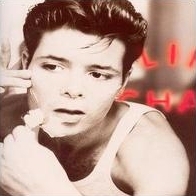
- Format: MP3

Such an unimaginative title for such a imaginative boxful. Across four discs and 105 songs, Cliff Richard's earliest catalog comes in for precisely the kind of treatment every rock & roll star should have: an all-encompassing study of his most important period. Even more impressively, though the song titles all sound familiar, the performances rarely are. Thirty-seven tracks are bona fide unreleased (South African 78s notwithstanding), but several dozen more are culled from scarce EP-only mixes, rarely resurfacing B-sides, and unusual mixes. One cut, an undubbed take of "Willie and the Hand Jive," was hitherto available only on a mid-'80s budget-priced single disc, covering much the same period as this. It wasn't aimed at collectors, it wasn't heavily advertised, and it probably didn't sell many copies. Of such things do completists dream, but when you have a beakful of hen's teeth to sort through, do such things really matter? Discs one through three are the conventional ones. Running in strict chronology through Richard's first eight albums, 20-plus EPs, and 23 singles, highlights are sorted, then sorted again. Where a rare version exists, that's what is offered here, be it an alternate version of "It's All in the Game," an unreleased rehearsal of "Do You Wanna Dance," or the original stereo mix for the album take of "Twenty Flight Rock." Disc one is the hottest. The swagger of "Move It," the dynamics of "Dynamite," all the things that sent the New Musical Express running home to hide in 1958/1959 (screaming, "must we fling this filth at our pop kids?") are here. From this side of the ocean, the best-known tracks are the American covers, and there's a fair swathe of them to be sure. But the killers, the stompers, the real bees' knees, are the homegrown monsters that simply ripped up the form book and rewrote rocking basics. Just like the guy who sang them, in fact. Disc two, covering 1959-1961, keeps up the pace for as long as it can, but rock & roll itself was starting to flag, and Richard's energy level flags with it. By disc three, 1962-1963, Richard's post-Beatles role of mainstream pop balladeer was already in his grasp, and though he could still kick out the jams when he wanted (a soulful "Blueberry Hill," a raunchy "Reelin' and Rockin'"), it's the ballads that stick out the most -- "It's All in the Game" and "I'm Looking Out the Window." And then there's "The Next Time," stripped down to its unorchestrated basics, and still one of Richard's most impressive performances. Until you reach disc four, of course. Subtitled "Rare'n'Rockin' 1958-63," this is the album that completely rewrites history. It opens with the first recording Richard (then still laboring under his distinctly nondescript given name of Harry Webb) ever made: He rips through raucous, raw renderings of "Lawdy Miss Clawdy" and "Breathless," cuts to a 1958 live show, and hacks through broadcast tapes and unreleased acetates. And every one is a gem. His Elvis Presley covers are especially remarkable. America's rock & roll revolution, of course, was matched blow for blow by skiffle in the U.K. -- even Richard's Shadows cut their teeth in that movement, as members of Wally Whyton's Vipers. Where Richard triumphed over the rest of the pack was in the way he blended the two forms together; where "Rare'n'Rockin'" triumphs is by revealing just how seamless that blending could be. And "Jailhouse Rock" and "Heartbreak Hotel" are the apogee of his art. Suddenly it's no surprise that, for every new British band from the Beatles on down, it was Richard and the Shadows who pointed the way, not Elvis, Buddy Holly, Eddie Cochran, or Gene Pitney, and certainly none of the names who sprang up in Britain in Richard's wake. Richard did more than create a hybrid. He invented a truly British way of rocking. And from the Beatles to Blur, the Rolling Stones to the Stone Roses, that method remains fundamental to British rock.